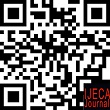Meta-Analysis: The Effectiveness of Using Blended Learning on Multiple Intelligences and Student Character Education During the Covid-19 Period
Abstract
This study aims to determine the effectiveness of the use of integrated blended learning on multiple intelligences (multiple intelligence) and student character education during the COVID-19 period. This type of research is a meta-analysis research. The research sample came from a search of 21 national and international journals. Search articles through databases sourced from Google Scholar, Eric, IEEE, Science Director and Wiley. The sample selection technique is purposive sampling technique. The data sampled relates to the use of Blended Learning, Multiple Intelligence and character education. Data analysis used quantitative data analysis techniques by conducting effect size and N-Gain tests using JASP software version 26. The results showed that the use of STEM integrated blended learning was effective in increasing students' multiple intelligence with an average value of 76.25 and student character education of 75 with the value of effect size (ES) is 0.44 and the N-Gain is 0.65 category medium.
Keywords
Full Text:
DOWNLOAD [PDF]References
Abdelraheem, A. Y. (2014). Enhancing Students’ Learning and Self- Efficacy Through Blended Learning in a Teachers’ Program. I-Manager’s Journal of Educational Technology, 10(4), 29–39. https://doi.org/10.26634/jet.10.4.2607
Abuhammad, S. (2020). Heliyon Barriers to distance learning during the COVID-19 outbreak : A qualitative review from parents ’ perspective. Heliyon, 6(1),. https://doi.org/10.1016/j.heliyon.2020.e05482
Ahamad, A. N., Samsudin, M. A., Ismail, M. E., & Ahmad, N. J. (2021). Enhancing the Achievement in Physics’ Motion Concept through Online Multiple Intelligence Learning Approach. Eurasia Journal of Mathematics, Science and Technology Education, 17(2), 1–11. https://doi.org/10.29333/ejmste/9698
Akhmalia, N. L., Suana, W., & Maharta, N. (2018). Efektivitas Blended Learning Berbasis LMS dengan Model Pembelajaran Inkuiri pada Materi Fluida Statis terhadap Penguasaan Konsep Siswa. JIPFRI (Jurnal Inovasi Pendidikan Fisika Dan Riset Ilmiah), 2(2), 56–64. https://doi.org/10.30599/jipfri.v2i2.299
AlRouji, O. (2020). The Effectiveness of Blended Learning in Enhancing Saudi Students’ Competence in Paragraph Writing. English Language Teaching, 13(9), 72. https://doi.org/10.5539/elt.v13n9p72
Alsarayreh, R. (2020). Using blended learning during COVID-19: The perceptions of school teachers in Jordan. Cypriot Journal of Educational Sciences, 15(6), 1544–1556. https://doi.org/10.18844/CJES.V15I6.5298
Amin, A. K. (2017). Kajian Konseptual Model Pembelajaran Blended Learning berbasis Web untuk Meningkatkan Hasil Belajar dan Motivasi Belajar. JURNAL PENDIDIKAN EDUTAMA, 4(2), 51–64.
Ariawan, I. P. W., & Divayana, D. G. H. (2020). Design of blended learning based on tri kaya parisudha using kelase platform in realizing hybrid-superitem learning in mathematics lessons. International Journal of Instruction, 13(3), 679–698. https://doi.org/10.29333/iji.2020.13346a
Arsanti, M. (2018). Pengembangan Bahan Ajar Mata Kuliah Penulisan Kreatif Bermuatan Nilai-Nilai Pendidikan Karakter Religius Bagi Mahasiswa Prodi Pbsi, Fkip, Unissula. KREDO : Jurnal Ilmiah Bahasa Dan Sastra, 1(2), 71–90. https://doi.org/10.24176/kredo.v1i2.2107
Bains, M., Reynolds, P. A., Mcdonald, F., & Sherriff, M. (2011). Effectiveness and acceptability of face-to-face, blended and e-learning: A randomised trial of orthodontic undergraduates. European Journal of Dental Education, 15(2), 110–117. https://doi.org/10.1111/j.1600-0579.2010.00651.x
Bangkom, K., & Sukavatee, P. (2021). Effects of oracy building instruction via blended-learning environment on thai students’ metacognitive awareness and oracy skills. LEARN Journal: Language Education and Acquisition Research Network, 14(1), 240–293.
Chan, C. H. Y. (2014). Building an online library for interpretation training: Explorations into an effective blended-learning mode. Computer Assisted Language Learning, 27(5), 454–479. https://doi.org/10.1080/09588221.2013.770034
Chaturvedi, K., Vishwakarma, D. K., & Singh, N. (2021). Children and Youth Services Review COVID-19 and its impact on education , social life and mental health of students : A survey. Children and Youth Services Review, 121(2), 105-866. https://doi.org/10.1016/j.childyouth.2020.105866
Erdem, D., & Keklik, İ. (2020). Multiple Intelligences Profiles in Prospective Teachers. Education Reform Journal, 5(1), 27–44. https://doi.org/10.22596/erj2020.05.01.27.44
Eryilmaz, M. (2015). The Effectiveness Of Blended Learning Environments. Contemporary Issues in Education Research (CIER), 8(4), 251–256. https://doi.org/10.19030/cier.v8i4.9433
Ghaznavi, N., Haddad Narafshan, M., & Tajadini, M. (2021). The Implementation of a Multiple Intelligences Teaching Approach: Classroom engagement and physically disabled learners. Cogent Psychology, 8(1). https://doi.org/10.1080/23311908.2021.1880258
Gide, A. (2017). Pengembangan Perangkat Model Blended Learning untuk Meningkatkan Efektivitas Penerapan Pendidikan Jarak Jauh di SMKN 2 Gerun. Jurnal Pendidikan, 4(2), 173–1.
Graham, C. R., Borup, J., Pulham, E., & Larsen, R. (2019). K–12 Blended Teaching Readiness: Model and Instrument Development. Journal of Research on Technology in Education, 51(3), 239–258. https://doi.org/10.1080/15391523.2019.1586601
Hasanah, H., Makassar, U. N., Street, A. P. P., Makassar, U. N., Street, A. P. P., Planning, H. E., & Board, C. (2020). Cypriot Journal of Educational. 15(5), 1295–1306.
Hasbullah, H. (2015). Blended Learning, Trend Strategi Pembelajaran Matematika Masa Depan. Formatif: Jurnal Ilmiah Pendidikan MIPA, 4(1), 49–56. https://doi.org/10.30998/formatif.v4i1.140
Herlandy, P. B., & Novalia, M. (2019). Penerapan E-Learning Pada Pembelajaran Komunikasi Dalam Jaringan Dengan Metode Blended Learning Bagi Siswa SMK. Journal of Education Informatic Technology and Science, 1(1), 24–33.
Hikmat, Hermawan, E., Aldim, & Irwandi. (2020). Efektivitas Pembalajaran Daring Selama Masa Pandemi Covid-19. Digital Library, UIN SUnan Gung Djati, Bandung, 1–7.
Ho, V. (2016). Blended learning model on hands-on approach for in-service secondary school teachers: Combination of E-learning and face-to-face discussion. Education and Information Technologies, 21(1), 185–208. https://doi.org/10.1007/s10639-014-9315-y
Hong, J. C., Tsai, C. M., Ho, Y. J., Hwang, M. Y., & Wu, C. J. (2013). A comparative study of the learning effectiveness of a blended and embodied interactive video game for kindergarten students. Interactive Learning Environments, 21(1), 39–53. https://doi.org/10.1080/10494820.2010.542760
Jones, E. (2017). One size fits all? Multiple intelligences and legal education. Law Teacher, 51(1), 56–68. https://doi.org/10.1080/03069400.2015.1082238
Karbono, K., & Retnawati, H. (2020). The Correlation between Religiosity and Multiple Intelligences: A Meta-Analysis. International Journal of Instruction, 14(1), 365–378. https://doi.org/10.29333/IJI.2021.14121A
Khoiri, A. (2019). Meta Analysis Study: Effect of STEM (Science Technology Engineering and Mathematic) towards Achievement. Formatif: Jurnal Ilmiah Pendidikan MIPA, 9(1), 71–82. https://doi.org/10.30998/formatif.v9i1.2937
Latif, B. (2020). Kata kunci : Pembelajaran Bermakna, Analisis Real, Pembelajaran Daring, Covid-19. Jurnal Pengembangan Pembelajaran Matematika (JPPM SUKA), II(2), 79–88.
Ma, L., & Lee, C. S. (2021). Evaluating the effectiveness of blended learning using the ARCS model. Journal of Computer Assisted Learning, 37(5), 1397–1408. https://doi.org/10.1111/jcal.12579
Morgan, J. J., & Spies, T. G. (2020). Integrating blended learning in middle school ELA classrooms to support diverse learners: Lessons learned. Journal of School Administration Research and Development, 5(1), 44–51.
Müller, C., & Mildenberger, T. (2021). Facilitating flexible learning by replacing classroom time with an online learning environment: A systematic review of blended learning in higher education. Educational Research Review, 34(April). https://doi.org/10.1016/j.edurev.2021.100394
Müller, F. A., & Wulf, T. (2021). Blended Learning Environments That Work: An Evidence-Based Instructional Design For The Delivery Of Qualitative Management Modules. International Journal of Management Education, 19(3), 1–12. https://doi.org/10.1016/j.ijme.2021.100530
Mustakim, M. (2020). Efektivitas Pembelajaran Daring Menggunakan Media Online Selama Pandemi Covid-19 Pada Mata Pelajaran Matematika. Al Asma : Journal of Islamic Education, 2(1), 1. https://doi.org/10.24252/asma.v2i1.13646
O’Reilly, R., Ramjan, L. M., Fatayer, M., Stunden, A., & Gregory, L. R. (2020). Corrigendum To “First Year Undergraduate Nursing Students’ Perceptions Of The Effectiveness Of Blended Learning Approaches For Nursing Numeracy. Nurse Education in Practice, 46(7).234-244 https://doi.org/10.1016/j.nepr.2020.102825
Öncü, S., & Bichelmeyer, B. A. (2021). Instructional practices affecting learner engagement in blended learning environments. Participatory Educational Research, 8(3), 210–226. https://doi.org/10.17275/per.21.62.8.3
Orcid, C. M., Ozgur, O., & Orcid, D. (2019). Effectiveness Of Gamification Elements In Blended.
Oyedotun, T. D. (2020). Research in Globalization Sudden change of pedagogy in education driven by COVID-19 : Perspectives and evaluation from a developing country. Research in Globalization, 2, 100029. https://doi.org/10.1016/j.resglo.2020.100029
Prajitno, S. H., & Ladyawati, E. (2019). Efektivitas Modul Matematika Diskrit Berbasis Multiple Intelligences. FIBONACCI: Jurnal Pendidikan Matematika Dan Matematika, 5(1), 11. https://doi.org/10.24853/fbc.5.1.11-22
Putra, I. G. W., Agustini, K., & Sudatha, I. G. W. (2020). Tren dan Implementasi Blended Learning pada Bidang STEAM : Kajian Studi di Indonesia. 1–13.
Putri, N. A. (2013). Penanaman Nilai-Nilai Pendidikan Karakter Melalui Mata Pelajaran Sosiologi. KOMUNITAS: International Journal of Indonesian Society and Culture, 3(2), 205–215. https://doi.org/10.15294/komunitas.v3i2.2317
Qoyyimah, U. (2016). Inculcating character education through EFL teaching in Indonesian state schools. Pedagogies, 11(2), 109–126. https://doi.org/10.1080/1554480X.2016.1165618
Ranjan, P. (2020). Is blended learning better than online learning for b.Ed students? Journal of Learning for Development, 7(3), 349–366.
Rofifah, D. (2020).Pembelajaran Blended Learning di SMA. Toward a Media History of Documents, 2007, 12–26.
Santosa, T. A., Razak, A., Arsih, F., & Sepriyani, E. M. (2021). Meta-Analysis : Science Learning Based on Local Wisdom Against Preserving School Environments During the Covid-19 Pandemic. Journal of Biology Education, 10(2), 244–251.
Setiawan, R., Mardapi, D., Pratama, A., & Ramadan, S. (2019). Efektivitas Blended Learning Dalam Inovasi Pendidikan Era. Jurnal Inovasi Teknologi Pendidikan, 6(2), 148–157.
Syamsul huda, E. a. (2019). nderstanding of Mathematical Concepts in the Linear Equation with Two Variables: Impact of E-Learning and Blended Learning Using Google Classroom. Al-Jabar: Jurnal Pendidikan Matematika, 10(2), 261–270.
Tomi Apra Santosa, Abdul Razak, Azwir Anhar, R. S. (2021). Efektivitas Model Blended Learning Terhadap Hasil Belajar Mahasiswa Pada Mata Kuliah Zoologi di Era Covid-19. BIODIK: Jurnal Ilmiah Pendidikan Biologi, 7(1), 77–83.
Vo, H. M., Zhu, C., & Diep, N. A. (2017). The effect of blended learning on student performance at course-level in higher education: A meta-analysis. Studies in Educational Evaluation, 53, 17–28. https://doi.org/10.1016/j.stueduc.2017.01.002
Widiara, I. K. (2018). Blended Learning Sebagai Alternatif Pembelajaran Di Era Digital. Purwadita, 2(2), 50–56.
Wong, K. T., Hwang, G. J., Goh, P. S. C., & Mohd Arrif, S. K. (2020). Effects of blended learning pedagogical practices on students’ motivation and autonomy for the teaching of short stories in upper secondary English. Interactive Learning Environments, 28(4), 512–525. https://doi.org/10.1080/10494820.2018.1542318
Yana, D. (2019). Efektivitas Penggunaan Platform Lms Sebagai Media Pembelajaran Berbasis Blended Learning Terhadap Hasil Belajar Mahasiswa, Jurnal Pendidikan IPA. 8(1), 1–12.
Yick, K. lun, Yip, J., Au, S. chuen, Lai, Y. yan, & Yu, A. (2019). Effectiveness of blended learning in the first year of fashion education. International Journal of Fashion Design, Technology and Education, 12(2), 178–188. https://doi.org/10.1080/17543266.2018.1546910
Yudhana, S. (2021). The Implementation of Blended Learning to Enhance English Reading Skills of Thai Undergraduate Students. English Language Teaching, 14(7), 1. https://doi.org/10.5539/elt.v14n7p1
Yuliana, I. (2019). Efektivitas Penerapan Blended Learning dengan Moodle sebagai Media Pembelajaran untuk Mata Pelajaran Simulasi Digital. PROtek : Jurnal Ilmiah Teknik Elektro, 6(1). https://doi.org/10.33387/protk.v6i1.998
DOI: https://doi.org/10.31764/ijeca.v4i3.5505
Refbacks
- There are currently no refbacks.
Copyright (c) 2021 Karlini Oktarina, Suhaimi, Tomi Apra Santosa, Abdul Razak, Irdawati, Yuni Ahda, Lufri, Dwi Hilda Putri

This work is licensed under a Creative Commons Attribution-ShareAlike 4.0 International License.
IJECA (International Journal of Education and Curriculum Application) already indexed:










___________________________________________________________________
| |
____________________________________________________________________
IJECA Publisher Office:







.jpg)





